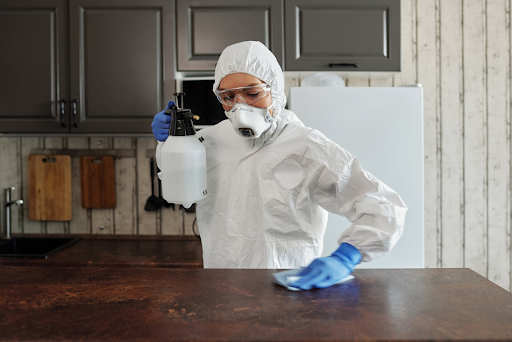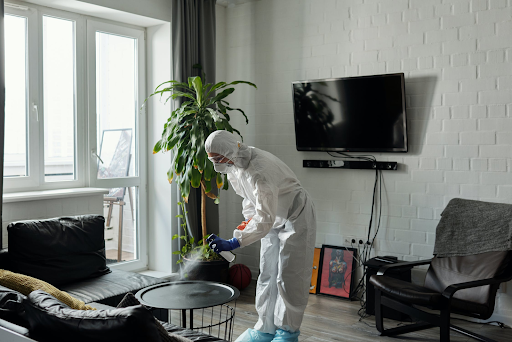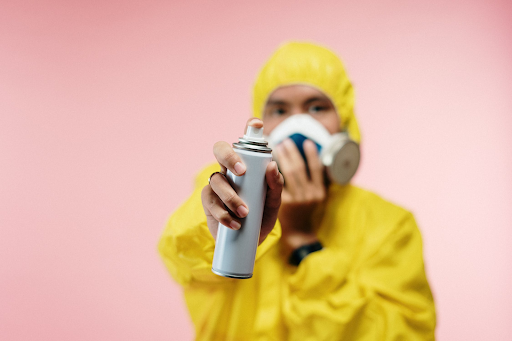
Disinfecting and sanitizing are two important steps to ensuring your health and safety. When disinfecting, the goal is to kill bacteria, fungi, and viruses. Sanitizing, on the other hand, means reducing the number of germs to a safe level.
Cleaning does not kill germs
Cleaning and sanitizing are essential steps in reducing the spread of infectious diseases. Sanitizing removes germs while cleaning eliminates dirt, dust, and other contamination.
Cleaners often use detergents and water to rid surfaces of dirt and grime. These products are not always effective, however. You can skip the worry and hire Albuquerque janitorial services if you so wish. This is because germs can hide under the surface and remain dormant.
So, if you are considering using any type of detergent, make sure to read the label closely. The best and most cost effective way to clean your home is to use a quality, all-purpose household cleaner. These cleaners contain soap, which is a great way to get rid of germs and bacteria.
You can also use a disinfectant, but be careful. A good disinfectant will make your house a germ-free zone, but overuse can leave behind resistant germs. If you are considering cleaning your home, make sure to wear protective clothing such as goggles and gloves. Another important element of a healthy home is ventilation.
When you are working on a large surface, it is especially important to ensure that you have good airflow. Keeping your home cool and dry can help to reduce the risk of colds and flu. One of the best ways to prevent the spread of germs is to stay home if you are sick. Getting plenty of rest and covering your cough and sneezes are other ways to protect you.

Sanitizing means lowering the number of germs to a safe level
Generally, sanitizing refers to the reduction of bacteria on a surface (https://medlineplus.gov/cleaningdisinfectingandsanitizing.html). It is an effective method for keeping people healthy. The process uses chlorine bleach and water to kill germs on a surface. But it can also be done with other products.
Sanitizing is a great daily cleaning routine, but it should be used sparingly. Overuse of sanitizing products can be counterproductive and lead to more resistant germs. Sanitizing is most commonly associated with food service facilities.
But it can be used on any surface that is frequently touched. However, it is not recommended for windows and hallway floors. Unlike sanitizing, disinfecting is a more thorough and effective way to reduce germs in private and public spaces.
A disinfectant is a product that kills both bacteria and viruses. They are often used in hospitals and other medical settings. Some disinfectants, such as bleach, are too strong for surfaces that are likely to come into contact with food.
Antimicrobial pesticides kill bacteria, fungi and viruses
Antimicrobial pesticides like these are chemicals which help control the growth of harmful microbes. They are used on various surfaces in homes, schools and industrial settings to protect them from the spread of diseases. These include disinfectants, fungicides, insecticides, storylands and sterilizers.
Many antimicrobial pesticides are used in swimming pools and water treatment facilities to prevent infections. They also protect furniture, plants and other household objects from microbial invasion. The products can be applied to countertops, toilets, towels, toothbrushes, utensils, toys and many other items.
Disinfectants are oxidizers or non-oxidizers
Disinfectants are compounds that destroy bacteria, fungi, or viruses. Disinfectants are usually applied in water treatment plants and other facilities. The effectiveness of a disinfectant depends on a number of factors, such as pH, temperature, and the chemical demand of the medium.
Some disinfectants have a broad spectrum of activity, while others are more effective at a specific temperature or concentration. Various types of disinfectants are used in the industry, ranging from peroxides to alcohols.
Alcohols are often used as an antiseptic because they don’t cause corrosion. However, they have limited activity in the presence of organic materials. They can also be fire hazards, so use them carefully.

Surfaces to be sanitized
Sanitizing is a process of disinfecting surfaces and objects. This process is usually performed with liquid chemical solutions. The effectiveness of sanitizing varies by the type of surface to be treated and the concentration of the disinfectant.
Several government agencies, including the CDC, have created guidance for cleaning and disinfecting homes and public spaces. Many products on the market are registered with the EPA as sanitizers or disinfectants. They must be used according to the label directions and contact time.
To help individuals and businesses understand how to sanitize, the CDC has provided a flowchart. It offers recommendations for cleaning and disinfecting high-touch household surfaces, as well as communal areas.
Preventing the spread of contagious viruses
There are many methods for preventing the spread of contagious viruses. While a lot of focus is placed on vaccines and antivirals, there are many other ways to stop a disease in its tracks. It all begins with personal hygiene. For example, washing your hands with soap and water is a good place to start.
Another method is to use disinfecting products that are registered with the Environmental Protection Agency (EPA) to kill harmful germs. Using products designed to disinfect specific bacteria and viruses are the way to go.
One of the easiest ways to ward off a skin infection is to wash and dry your hands often. Aside from this, proper hygienic practices include properly cleaning your bedding, showering and avoiding contact with infected individuals. Also, don’t forget to use a hand sanitizer, especially after going to the bathroom.
Interesting Related Article: “How to Choose the Best End of Lease Cleaning Company“

